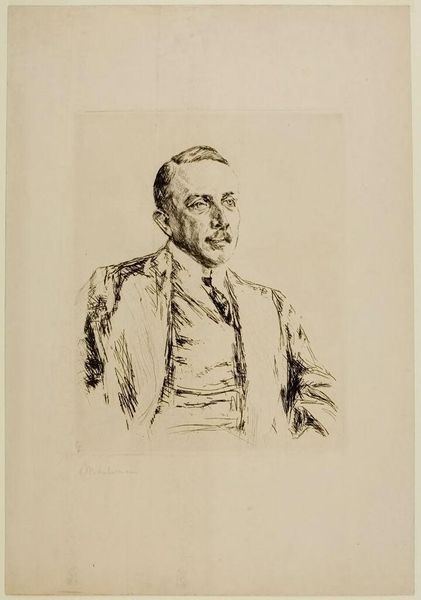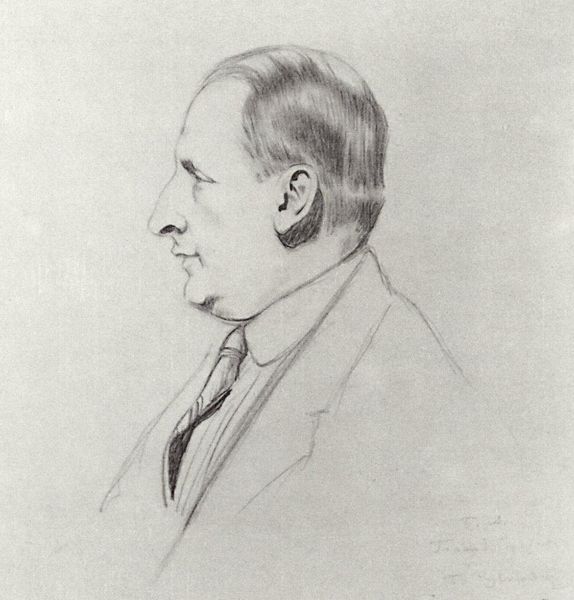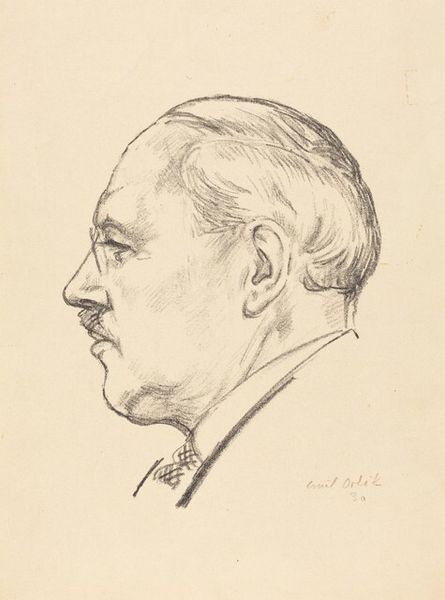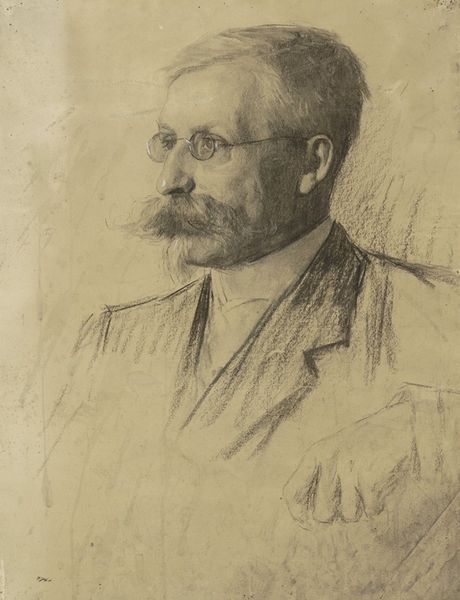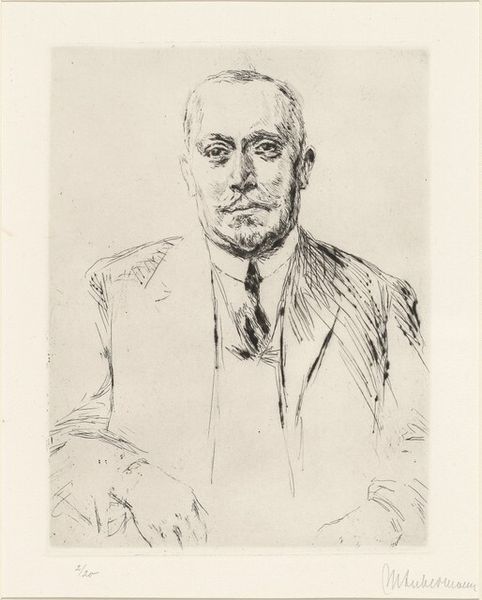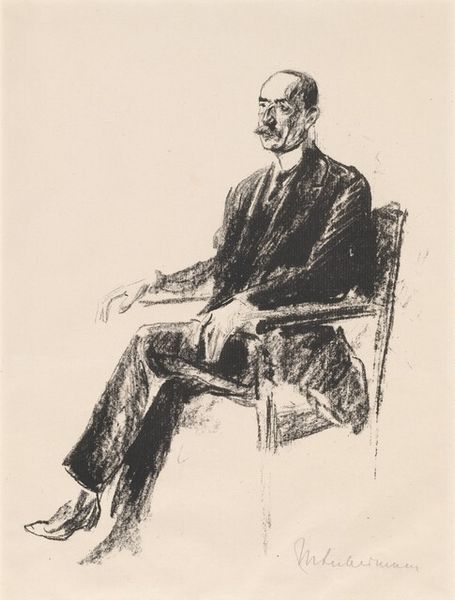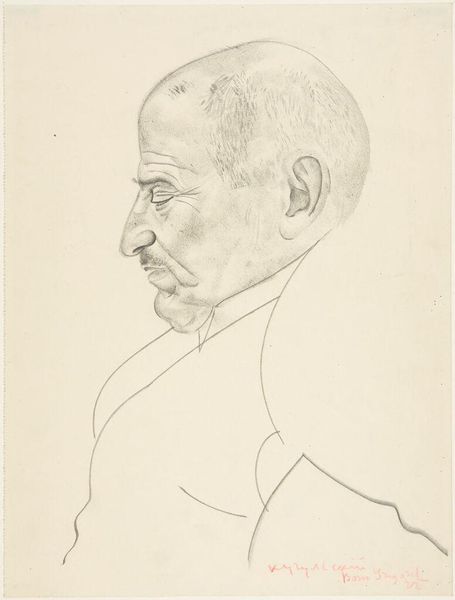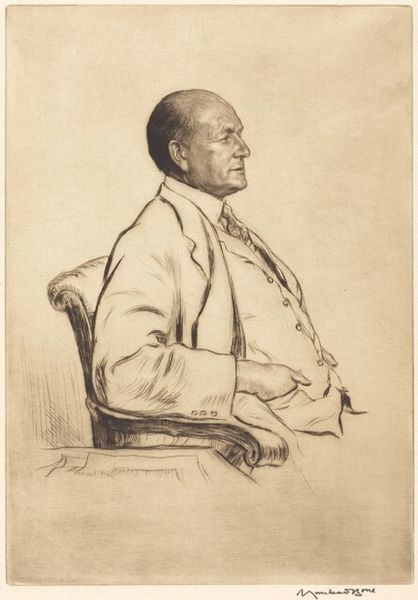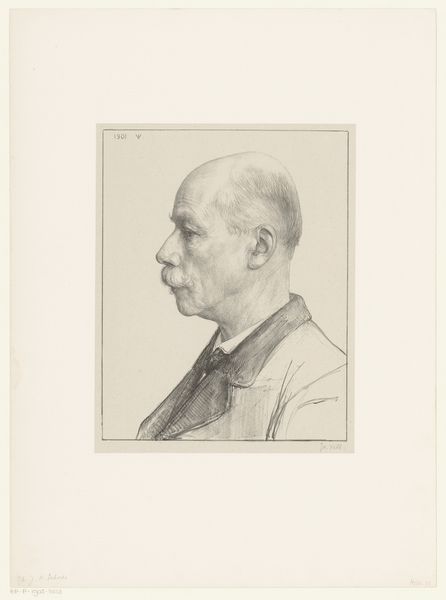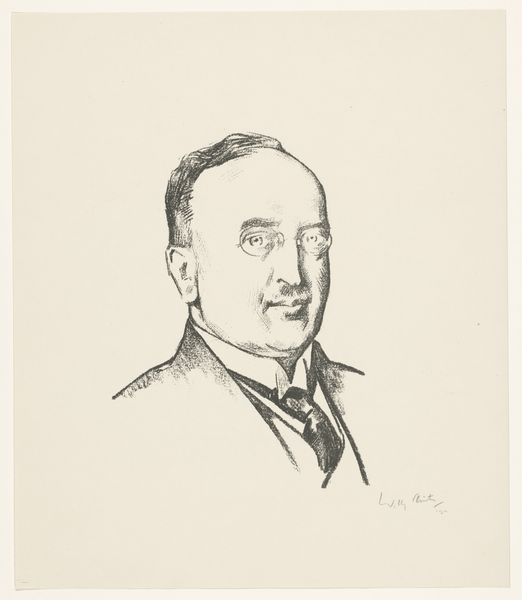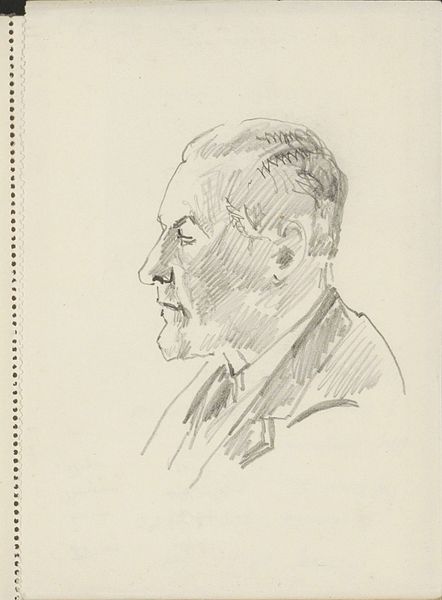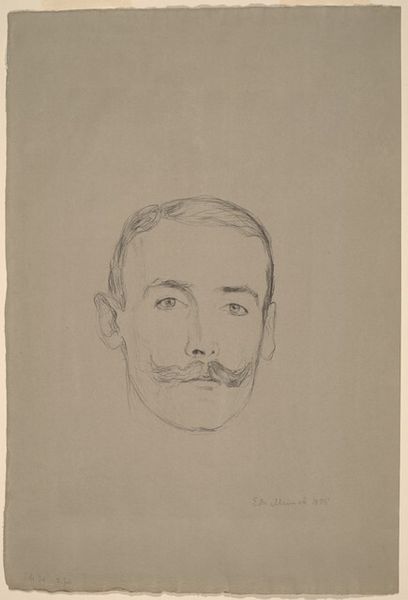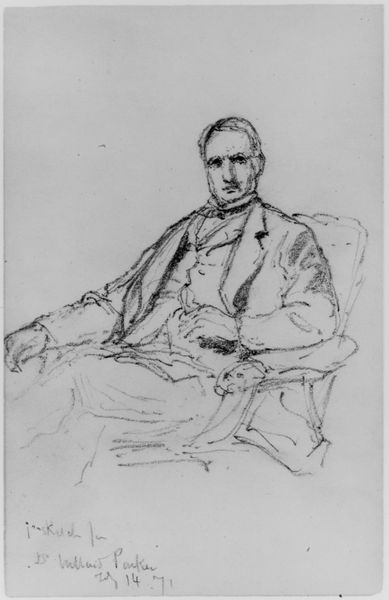
drawing, print, pencil
#
portrait
#
drawing
# print
#
pencil drawing
#
pencil
#
portrait drawing
Dimensions: sheet: 29.5 x 22 cm (11 5/8 x 8 11/16 in.)
Copyright: National Gallery of Art: CC0 1.0
Curator: This is a portrait of Sir Frank Short, rendered in pencil on paper by Sir William Rothenstein in 1921. What are your first thoughts? Editor: Somber. He looks like a man burdened by responsibility. I'm drawn to the precision of the lines, the detail around the eyes especially. Curator: I notice the dedication inscribed at the lower right, something about a gift for a friend, a gesture towards solidarity between artists? It highlights how crucial patronage and mutual support are for artistic labor, then as now. This was originally a print, making it readily available and distributable. Editor: Right, but look at the subtle symbolic language. The receding hairline suggests wisdom earned, or perhaps anxieties over aging. And that precisely sculpted mustache screams authority and control! It seems almost a mask. Curator: Yes, but the softness of the pencil undermines the impression of power somewhat, wouldn't you say? Rothenstein employed quite a delicate touch to depict a man with so much social capital. The material lends the portrait a fragile quality. Think of the paper substrate too – its manufacturing, distribution. Editor: Interesting. For me, the shading around the eyes hints at a deep well of emotion that Short keeps carefully guarded. The way Rothenstein captures light, there is certainly respect, or possibly even veneration. Do we know the nature of their relationship? Curator: Indeed, tracking that personal connection – friendship and a professional bond – helps contextualize the piece. These artworks carry not only their individual meaning but the history of those who created them and were depicted in them, highlighting production processes and artistic social environments. Editor: The print medium underscores accessibility, a kind of democratic distribution of Short's image and the qualities attributed to him. He must have been something of an important public figure. The visual codes speak to lasting influence and established reputation, right? Curator: Absolutely. Analyzing it together brings out multiple angles: the artistic gesture, its materiality and reproduction as social practices, versus the sitter’s image, constructed via specific visual iconography. Editor: I find it particularly intriguing how such a seemingly simple medium can carry so much symbolic weight. Curator: And how those accessible mediums affect social perception. A satisfying combination, wouldn't you agree?
Comments
No comments
Be the first to comment and join the conversation on the ultimate creative platform.
